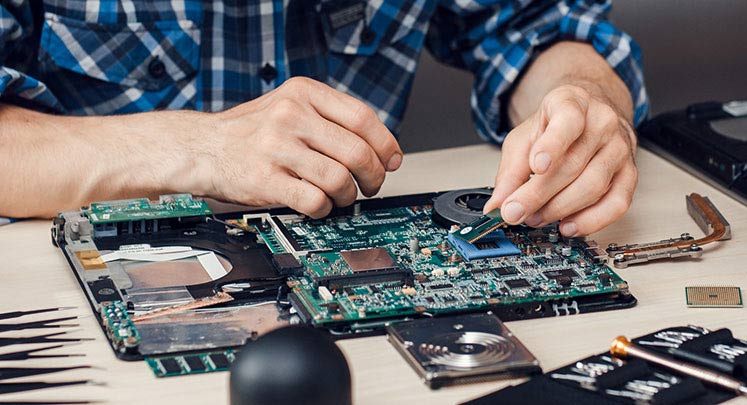Launching a dropshipping business in the Philippines has emerged as a noteworthy trend in the e-commerce sector. Aspiring entrepreneurs are drawn to this business model for its ease of entry and relatively low overhead costs. Dropshipping enables sellers to offer a wide array of products to their customers without holding any inventory. Once a sale is made, the order is fulfilled and shipped directly from a third-party supplier to the consumer. This method not only minimizes the risk but also maximizes the scalability of the business.
Understanding the local market is crucial for the success of a dropshipping business in the Philippines. Potential business owners must familiarize themselves with consumer preferences, internet usage habits, and the digital landscape of the country. Aligning the business approach to meet the unique demands of Filipino consumers can significantly increase the chance of a successful venture. Furthermore, entrepreneurs need to stay informed about the evolving trends within the dropshipping domain to maintain a competitive edge.
Understanding the Filipino Consumer
Filipino consumer behavior is distinctive and varies greatly across different regions and demographics. When venturing into the dropshipping business in the Philippines, it’s essential to understand that Filipino shoppers highly value variety and affordability. Social media influence and word-of-mouth play significant roles in their purchasing decisions. Therefore, a successful dropshipping venture must offer products that not only resonate with local trends but also fit into the average consumer’s budget.
Understanding local preferences involves more than just stocking popular items. Entrepreneurs must delve into the cultural nuances that influence buying patterns. For instance, Filipinos may prefer cash-on-delivery options over online payments due to widely held concerns about internet security. Tailoring your business to accommodate these preferences can lead to greater customer satisfaction and loyalty. In essence, a deep comprehension of the Filipino consumer’s mindset and habits is a major stepping stone in establishing a thriving dropshipping business in the region.
Finding the Right Suppliers
Identifying trustworthy suppliers is pivotal for the foundation of a successful dropshipping business in the Philippines. A reliable supplier ensures product quality and prompt delivery, which are both critical to maintaining customer satisfaction and a positive brand reputation. Begin by vetting potential suppliers for their product range, fulfillment times, and responsiveness to inquiries. Also, look for reviews or ask for references to gauge their reliability and service quality.
Once you’ve selected your suppliers, fostering a strong, collaborative relationship is key. Clear communication channels and mutual understanding of expectations can pave the way for smooth operations and conflict resolution. Establishing agreements on order processing times, return policies, and quality standards is essential. Keep in mind, a solid partnership with your suppliers not only secures a steady supply chain but can also provide leverage in negotiating better terms or dealing with unexpected market fluctuations.
Online Store Set-Up and Management
Setting up a user-friendly online store is the cornerstone of launching a dropshipping business in the Philippines. The store should feature an intuitive design, secure payment gateways, and mobile responsiveness, considering the high mobile internet usage in the country. Additionally, the platform of choice should enable easy integration with your suppliers’ systems for seamless order processing. Opt for e-commerce solutions known for their reliability and support, which is a lifeline for businesses should technical issues arise.
Once the store is live, effective management is ongoing. This includes regularly updating product listings, monitoring the user experience, and analyzing store performance data. Staying on top of your digital presence ensures you promptly respond to market changes and customer needs. It’s also important to stay informed of new e-commerce tools and features that can help you streamline operations and enhance the shopping experience. Remember, a well-managed online store is your primary tool for conversion and customer retention.
Marketing Your Dropshipping Business
Engaging with the Filipino audience demands a targeted approach, as they are known for being highly active on social media. A successful marketing strategy for your dropshipping business in the Philippines should leverage popular platforms like Facebook and Instagram. Use these channels to showcase your products, share customer testimonials, and engage with your audience through interactive content. Creating culturally relevant and relatable content can also lead to increased shares and word-of-mouth referrals.
In addition to social media marketing, consider email marketing to nurture relationships with your customers. Regular updates, exclusive deals, and personalized content can make your audience feel valued, encouraging loyalty and repeat business. Digital marketing efforts should be data-driven, relying on analytics to refine strategies and achieve better targeting. Sustainability in the competitive e-commerce market is tied to a brand’s ability to adapt its marketing strategy to the evolving digital landscape and consumer behaviors.
Navigating Legalities and Regulations
Navigating the legalities and regulations is critical for establishing a legitimate and compliant dropshipping business in the Philippines. To start, ensure you have acquired the necessary business permits and registrations. This includes registering with the Department of Trade and Industry (DTI) for sole proprietorships or the Securities and Exchange Commission (SEC) for corporations, as well as compliance with the Bureau of Internal Revenue (BIR). Understanding the local e-commerce laws and consumer protection regulations will also safeguard your business practices and help maintain customer trust.
Adhering to e-commerce regulations involves more than just initial registrations. Continuously monitor changes in tax laws, customs duties, and other legislative reforms that may affect your operations. For smoother transactions, familiarize yourself with international shipping and importation rules if you are sourcing products from overseas suppliers. By keeping your business compliant with all legal requirements, you secure not only its longevity but also its reputation among consumers.
Key Takeaway
Starting a dropshipping business in the Philippines presents a promising opportunity for entrepreneurs. By understanding the local market, forging strong relationships with dependable suppliers, setting up an efficient online store, implementing targeted marketing strategies, and complying with legal regulations, one can navigate the challenges of dropshipping successfully. Each step is critical, from tapping into the consumer’s psyche to leveraging digital marketing’s power and abiding by the law.
The journey of initiating a dropshipping business may seem daunting, but with the right approach, it can lead to a rewarding venture. As the Philippines continues to show robust internet usage growth and a welcoming e-commerce environment, now is an opportune time to delve into dropshipping. With dedication and adaptability, entrepreneurs can build a business that not only survives but thrives in the dynamic Filipino market.


